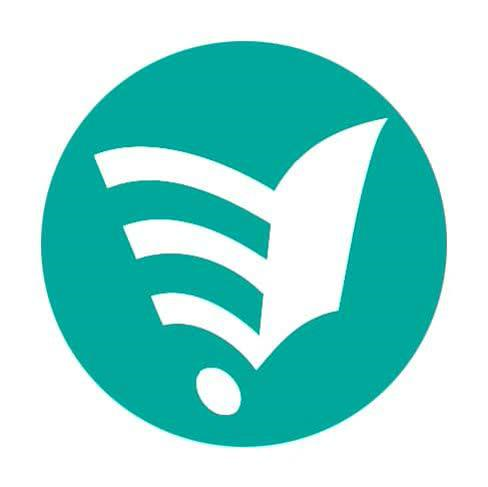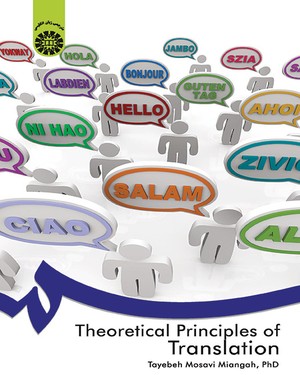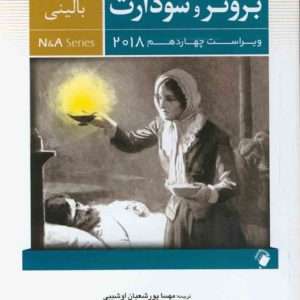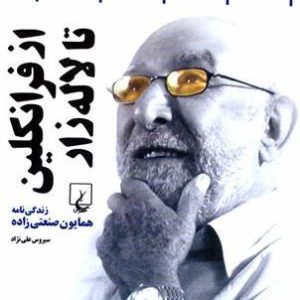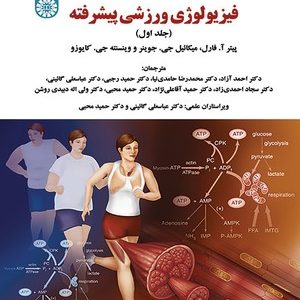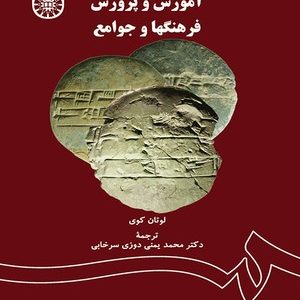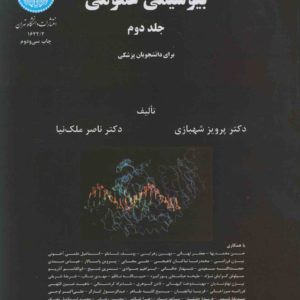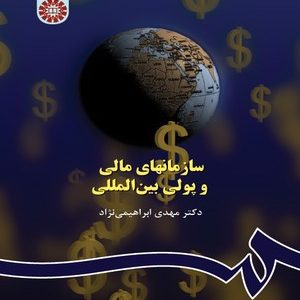سبد خرید شما خالی است.
Theoretical Principles of Translation – اصول و مبانی نظری ترجمه
موجود نیست
نقد و بررسی اجمالی
This book contains what I consider to be some of the most important issues in theoretical translation with which the translators should be familiar. It has been born out of a feeling of need for theoretical aspects of translation to be assembled in a single collection for whom professionally and academically engaged in translation. While the main readers of this book are students of translation, I imaging a diverse audience for the book, including translation trainees, professional translators, as well as teachers of translation.
فهرست این کتاب بصورت زیر است:
Preface
Chapter 1: Introduction
What Is Translation?
1.2-Who Is a Translator?
1.3-Translation and Linguistics
1.4- The Notion of Equivalence in Translation
1.4.1- Dynamic Equivalence vs. Formal or Static Equivalence
1.5- What Is Translation Theory?
1.6- Translation, Process and Product
Multiple-Choice Questions
Study Questions
Translation Practice
Chapter 2: History of Translation
2.1- Introduction
2.2- Significant Trends in the History of Translation
2.2.1- 4th Century B.C. and before
2.2.2- 3rd Century B.C.
2.2.3- 1st-11th Centuries
2.2.4- 11th-13th Centuries
2.2.5- 15th Century and Renaissance
2.2.6- 17th-18th Centuries
2.2.7- 19th Century
2.2.8- 20th Century
2.3- Some Major Translators Through History
2.3.1- Marcus Tullius Cicero
2.3.2- Horace
2.3.3- Saint Jerome
2.3.4- Xuan Zang
2.3.5- Dolet, Étienne (1509-1546)
2.3.6- Luther, Martin (1483-1546)
2.3.7- Abd-Allāh Ibn al-Muqaffa (Abū-Muḥammad Abd-Allāh Rūzbeh Ibn Dādūya/Dādōē)
2.3.8- Hunayn Ibn Isḥaq (Muḥammad Ibn Isḥaq Ibn Yasār)
2.3.9- Francis George Steiner
2.3.10- Edward Fitzgerald
2.3.11- Eugene Nida
2.4- History of Literary Translation
2.5- History of Translation in Iran
2.5.1- The Foundation Movement
2.5.2- The Revival Movement
2.5.3- The Survival Movement
2.5.4- The Modernization Movement
Multiple-Choice Questions
Study Questions
3- What are three basic principles set up by Tytler in 18th century?
Chapter 3: Translation Theories
3.1- Translation Theories before the 20th Century
3.2- Translation Theories after the 20th Century
3.2.1- Equivalence Theories of Translation
3.2.1.1- Formal and Dynamic Equivalence
3.2.1.2- Semantic and Communicative Translation
3.2.2- Functional Theories of Translation
3.2.2.1- Text Type
3.2.2.2- Translational Action
3.2.2.3- Skopos Theory
3.2.2.4- Translation-Oriented Text Analysis
3.2.3- System Theories
3.2.3.1- Polysystem Theory
3.2.3.2- Toury and Descriptive Translation Studies (DTS)
3.2.3.3- Chesterman’s Translation Norms
3.2.4- Philosophical Theories of Translation
3.2.4.1- Steiner’s Hermeneutic Motion
3.2.5- Postcolonial and Gender-Based Translation Studies
Multiple-Choice Questions
Study Questions
Chapter 4 Translation and Culture
4.1- Introduction
4.2- How Language and Culture Are Related?
4.3- Cultural Differences and Translation
4.3.1- Importance of Translation in Culture
4.3.2- Importance of Culture in Translation
4.4- Linguistic and Cultural Untranslatability
4.5- Anthropologists as Translators
4.6- Social Function of Language
4.6.1- Sapir-Whorf Hypothesis
4.7- Problems in Translating Cultural Elements
4.8- The Cultural Turn of the 1980s
4.9- Conclusion
Multiple-Choice Questions
Study Questions
Chapter 5 Types of Translators and Translations
5.1- Introduction
5.2- Types of Translators
5.2.1- Salaried Translators
5.2.2- Freelance Translators
5.2.3- Translators Working for Publishing Companies
5.2.4- Outlaws
5.2.5- Invisible Translators
5.2.6- Simultaneous Translators
5.3- Types of Translations
5.3.1- General Translation
5.3.2- Specialized Translation
5.3.3- Translation of Specialized Material
5.3.4- Literary Translation
5.3.5- Technical Translation
5.3.6- Commercial Translation
5.3.7- Financial Translation
5.3.8- Legal Translation
5.3.9- Biomedical and Pharmaceutical Translation
5.3.10- Scientific Translation
5.3.11- IT Translation
5.3.12- Advertising and Marketing Translation
5.3.13- Translation of [X]
5.3.14- The Sublime Quran Translation
5.3.15- Interpretation
Multiple-Choice Questions
Study Questions
Chapter 6: Some Translation Problems
6.1- Introduction
6.2- Untranslatability
6.3- Common Words
6.4- Loss and Gain
6.5- Literal Translation
6.6- Meaning Is More than Words
6.7- Two Priority Questions
6.8- Semiotics in Translation
6.9- Translation Ethics in Market and Education
6.10- Cohesion and Coherence
6.11- Equivalence
6.12- Creativity and Translation
Multiple-Choice Questions
Study Questions
Translation Practice
Chapter 7: Using Modern Technology in Translation
7.1- Introduction
7.2- Translation Demands
7.2.1- Translation for Dissemination
7.2.2- Translation for Assimilation
7.2.3- Translation for Interaction
7.3- Translation Tools
7.3.1- Machine Translation (MT)
7.3.1.1- Problems of MT
7.3.1.1.1- Rules and Exceptions
7.3.1.1.2- Ambiguity Problems
7.3.1.2- Improving MT Output
7.3.1.3- Approaches to MT
7.3.1.4- Machine Translation vs. Human Translation
7.3.2- Translation Memory (TM)
7.3.2.1- How Does a TM Work?
7.3.2.2- Suitable Texts for Translation Memory
7.3.3- Machine Readable Dictionaries (MRDs)
7.3.4- Linguistic Corpora
7.3.4.1- Two Main Applications of the Corpora in Translation
7.3.4.1.1- Finding Equivalents for Collocations
7.3.4.1.20 Verifying or Rejecting Decisions Taken Based on Other Tools
7.4- Audiovisual Translation
7.5- Localization
7.5.1- Localization and Translation Theory
Multiple-Choice Questions
Study Questions
Bibliography
مشخصات کلی
| سایر مشخصات | ||||||||||||||
|---|---|---|---|---|---|---|---|---|---|---|---|---|---|---|
| ||||||||||||||
پرسش و پاسخ
برای ثبت پرسش، لازم است ابتدا وارد حساب کاربری خود شوید
نقد و بررسی
- فروشنده: مدیر سایت
- هنوز امتیازی داده نشده است!
- 29,800 تومان
دستنامه بالینی -داخلی -جراحی برونر سودارث – ویراست چهاردهم 2018
